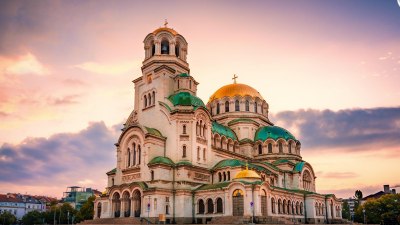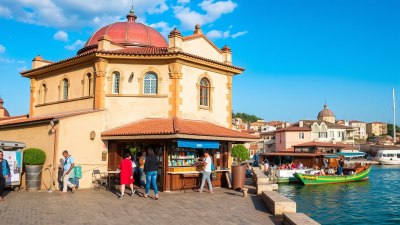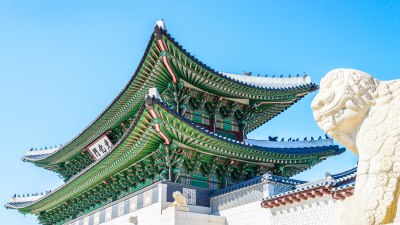Traveling Through Cities That Didn’t Survive Unchanged
Explore cities that have transformed dramatically while preserving their unique histories.

Image by peus-purchases on Freepik
Traveling through cities that have not survived unchanged offers a captivating glimpse into the past and present, revealing the stories of resilience, adaptation, and transformation that define urban landscapes. From ancient metropolises that have weathered the storms of time to modern cities reflecting the tensions between preservation and progress, these destinations invite travelers to explore the contrasts and connections found within their streets. How have these cities changed? What remains of their heritage, and what has been lost? In this article, we will take you on a journey through some remarkable cities that have evolved over the years, showcasing their historical significance and the transformations they have undergone.
The Story of Pompeii: A Time Capsule of Roman Life
Pompeii, a city frozen in time, was buried beneath volcanic ash after the catastrophic eruption of Mount Vesuvius in AD 79. The city was perfectly preserved for centuries, offering an astonishing insight into Roman life. Today, tourists walk through the ruins and marvel at the frescoes, mosaics, and artifacts left behind, all revealing details about daily life, commerce, and social structures during that time. However, over the years, Pompeii has also faced challenges, including significant restoration efforts that have altered some aspects of the original site. Archaeologists and restoration experts work tirelessly to balance preservation with the realities of weathering and decay, ensuring future generations can appreciate this extraordinary piece of history.
Berlin: A City of Dichotomy
Berlin is a city defined by its tumultuous history, showcasing a stark contrast between its past and present. Divided during the Cold War, Berlin has since evolved into a thriving metropolis known for its vibrant culture, arts, and innovative architecture. Key historical landmarks like the Berlin Wall and Brandenburg Gate serve as reminders of the city's divided past. Today, the city integrates modern structures with historical sites, creating a unique blend of old and new. The transformation of Berlin illustrates how cities can adapt while keeping their histories alive, making it an essential stop for those keen to explore urban evolution.
Tokyo: Tradition Meets Futurism
Tokyo, a city that blends rich traditions with cutting-edge technology, is a prime example of urban transformation. From a small fishing village known as Edo to one of the most populous cities in the world, Tokyo has undergone remarkable changes. The cityscape features a striking juxtaposition of ancient temples and shrines alongside futuristic skyscrapers and neon-lit districts. Despite rapid modernization, Tokyo has preserved its cultural heritage, with traditional festivals, arts, and cuisine flourishing amid the contemporary environment. Travelers can experience this vibrant fusion by exploring neighborhoods that reflect different eras, from the historical Asakusa district to the bustling Shibuya and Akihabara.
Lisbon: A City of Resilience
Lisbon, the capital of Portugal, has a rich history influenced by various cultures, including Roman, Moorish, and colonial Portuguese. The city has transformed considerably through its resilience to natural disasters, notably the devastating earthquake of 1755. The reconstruction brought about modernist architecture and a new urban layout, but remnants of the old city still survive in Alfama and Mouraria, where narrow streets and historic buildings tell stories of their past. The vibrant cultural scene today showcases Lisbon's artistic heritage, with Fado music, colorful azulejos, and lively marketplaces. Lisbon exemplifies how cities can embrace their histories while adapting to modern needs.
Hiroshima: From Destruction to Peace
The story of Hiroshima is one of the most profound examples of transformation following devastation. Previously a bustling city, Hiroshima was largely destroyed by an atomic bomb in 1945. Today, it stands as a symbol of peace and resilience, with the Hiroshima Peace Memorial Park serving as a reminder of the tragic events and a commitment to promoting peace worldwide. The transformation of Hiroshima includes not only the rebuilding of the city but also a focus on commemorating the past through museums and monuments. Visitors can explore the history and hope that defines Hiroshima's new identity, emphasizing the importance of remembering while moving forward.
Istanbul: A Tapestry of Cultures
Istanbul, once known as Byzantium and later Constantinople, has a rich history marked by the convergence of different empires and cultures. The city has changed hands many times and has adapted to various influences while retaining its unique identity. The majestic Hagia Sophia, transformed from a cathedral to a mosque and now a museum, illustrates this complex history. The bustling bazaars, magnificent palaces, and ancient mosques coexist with modern skyscrapers, making Istanbul a city of contrasts. As you wander through its streets, you encounter layers of history that blend harmoniously with contemporary Turkish culture, offering a colorful narrative of resilience and adaptation.
Moscow: A City of Contrasts
Moscow tells the tale of a city that has navigated through revolutions, wars, and political changes, each leaving its mark on the urban landscape. From the grandeur of the Kremlin to the opulence of the Bolshoi Theatre, Moscow showcases its rich heritage while embracing modern urban development. Notably, the city has integrated vast parks, contemporary art spaces, and innovative architecture alongside historic sites. The Moscow Metro is an art museum in transit, with its elaborate station designs reflecting the city's history and aspirations. As the capital of Russia, Moscow continues to evolve, balancing its storied past with a vibrant, dynamic present.
New Orleans: A Melting Pot of Cultures
New Orleans is renowned for its rich cultural tapestry, where French, African, Spanish, and Creole influences blend seamlessly. However, the city has faced significant challenges, most notably Hurricane Katrina in 2005, when widespread devastation prompted a reimagining of New Orleans. The resilience shown by its residents led to a revival of traditions, music, and cuisine that define the city's identity. Today, travelers can explore the vibrant neighborhoods of the French Quarter and Marigny, where art, music, and food celebrate New Orleans' unique heritage. The dynamic transformation of the city underscores the importance of culture and community in fostering resilience and revitalization.
Rome: A Timeless Journey
Rome, known as the Eternal City, is an extraordinary example of a city that showcases layers of history through its ancient ruins intertwined with the vibrancy of modern life. The Colosseum, Roman Forum, and Vatican City are just a few of the timeless landmarks that speak to Rome's glorious past, yet the city continues to evolve. The balance between preservation and modernization is seen in the integration of contemporary architecture alongside ancient structures. This juxtaposition enhances Rome's allure, allowing travelers to experience its rich history while enjoying modern Italian culture. La dolce vita thrives in this city that has persevered and transformed across millennia.
The Journey of Transformation
Traveling through cities that did not survive unchanged offers valuable insights into the resilience and adaptability of urban spaces. Each city tells a unique story of transformation, revealing how history shapes the present and future. The blend of old and new creates a dynamic tapestry that celebrates cultural heritage while embracing innovation. Whether through the preservation of ruins, the revival of community spirit after disasters, or the harmonious coexistence of diverse influences, these cities offer each traveler an invitation to explore and appreciate the complex narratives that define our urban landscapes.











